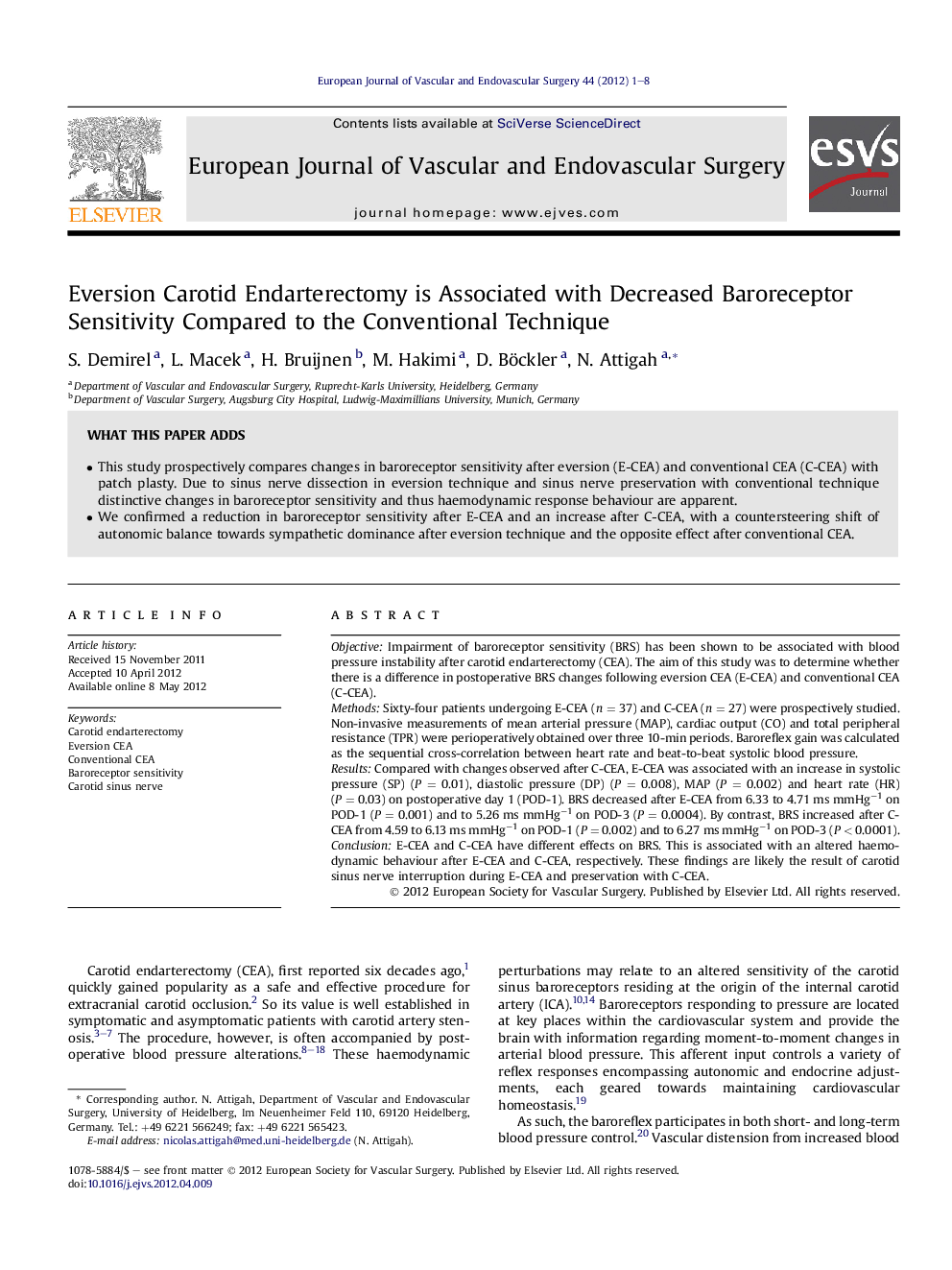| Article ID | Journal | Published Year | Pages | File Type |
|---|---|---|---|---|
| 2912780 | European Journal of Vascular and Endovascular Surgery | 2012 | 8 Pages |
ObjectiveImpairment of baroreceptor sensitivity (BRS) has been shown to be associated with blood pressure instability after carotid endarterectomy (CEA). The aim of this study was to determine whether there is a difference in postoperative BRS changes following eversion CEA (E-CEA) and conventional CEA (C-CEA).MethodsSixty-four patients undergoing E-CEA (n = 37) and C-CEA (n = 27) were prospectively studied. Non-invasive measurements of mean arterial pressure (MAP), cardiac output (CO) and total peripheral resistance (TPR) were perioperatively obtained over three 10-min periods. Baroreflex gain was calculated as the sequential cross-correlation between heart rate and beat-to-beat systolic blood pressure.ResultsCompared with changes observed after C-CEA, E-CEA was associated with an increase in systolic pressure (SP) (P = 0.01), diastolic pressure (DP) (P = 0.008), MAP (P = 0.002) and heart rate (HR) (P = 0.03) on postoperative day 1 (POD-1). BRS decreased after E-CEA from 6.33 to 4.71 ms mmHg−1 on POD-1 (P = 0.001) and to 5.26 ms mmHg−1 on POD-3 (P = 0.0004). By contrast, BRS increased after C-CEA from 4.59 to 6.13 ms mmHg−1 on POD-1 (P = 0.002) and to 6.27 ms mmHg−1 on POD-3 (P < 0.0001).ConclusionE-CEA and C-CEA have different effects on BRS. This is associated with an altered haemodynamic behaviour after E-CEA and C-CEA, respectively. These findings are likely the result of carotid sinus nerve interruption during E-CEA and preservation with C-CEA.
